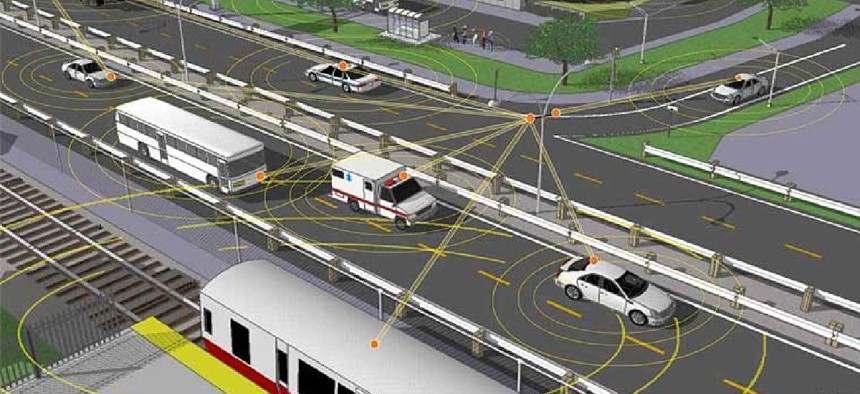Connected vehicles pilots pave the way to autonomy


Connecting state and local government leaders
A fully autonomous automotive ecosystem is still decades down the road, but experts say vehicles will be communicating with roadside infrastructure much sooner.
While automated, driverless vehicles sometimes seem just around the corner, the reality is that it will take many years for the technology and infrastructure to mature, experts told the Senate Committee on Environment and Public Works.
“Large-scale deployment of automated vehicles will take decades to achieve, and there will be a significant percentage of manually driven vehicles for the foreseeable future,” Zachary Doerzaph, the director of Virginia Tech's Center for Advanced Automotive Research, told the panel at the June 13 hearing on the effects of autonomous technology on the nation's roads and bridges. “Automation remains costly, does not equally benefit all users and does not operate ubiquitous across all environments,” he said.
In the meantime, connected vehicle technology and its associated infrastructure could provide short-term benefits, witnesses testified. These CV technologies will help cars improve “prescription, recognition and pathfinding,” Doerzaph said.
The Wyoming Department of Transportation has already begun testing CV applications as part of a pilot project with the U.S. Department of Transportation, WYDOT Director William Panos told lawmakers.
“Cars driven by people are increasingly equipped with electronics that can receive data from [dedicated short range communication]-enabled equipment along the roadway,” Panos said. “DSRC signals can help nonautomated as well as automated vehicles effectively see in bad weather, provide other information, such as on traffic congestion.”
DSRC provides high-speed, two-way short- to- medium-range wireless transmissions critical for real-time communications-based safety applications. It can be used to alert drivers when they get close to the edge of the road and indicate the presence of nearby vehicles, sharp curves or slippery patches of roadway ahead. It also enables vehicle-to-infrastructure (V2I) services like e-parking and toll payments.
This DSRC technology is at the heart of the ongoing USDOT CV pilot, which includes Wyoming, New York City and Tampa, Fla. The technology is already being built into cars, and the goal is to put more of it in infrastructure, enabling wider use of V2I communication.
In Wyoming, the pilot is testing the transmission of warning messages to drivers along I-80 via DSRC. During the winter, bad weather contributes to accidents on the state's main east-west highway, so officials want to see how DSRC can improve driver awareness, Panos said.
“The pilot program will test warnings advising travelers of crashes ahead,” he said. “It will also advise about weather, speed restrictions, work zones and other matters.”
DSRC alleviates the need for cellular or other network connectivity, which can be scarce and expensive in rural areas, Panos said. The technology was also designed to be standards-based, free and interoperable, which is key for enabling a variety of vehicles and infrastructure to communicate regardless of state lines, he said in his testimony.
New York City is installing CV devices at 400 intersections in Manhattan and Brooklyn that will communicate with 7,000 vehicles during the pilot, which is expected to roll out next year.
“The pilot also connects with our existing network of smart traffic signals that communicate wirelessly with our Traffic Management Center,” Polly Trottenberg, the commissioner of the New York City Department of Transportation, said in her testimony.
As the connected and automated vehicle technologies mature, manufacturers and regulators should ensure cybersecurity protections are integrated into these systems, Shaun Kildare, the director of research for the Advocates for Highway and Auto Safety, said.
He suggested autonomous vehicles should be required to meet basic security standards. “The real possibility of a malevolent computer hack impacting hundreds or thousands of AVs, perhaps whole model runs, makes strong cybersecurity protections a crucial element of AV design,” Kildare testified.
NEXT STORY: NIST builds drone forensics dataset




